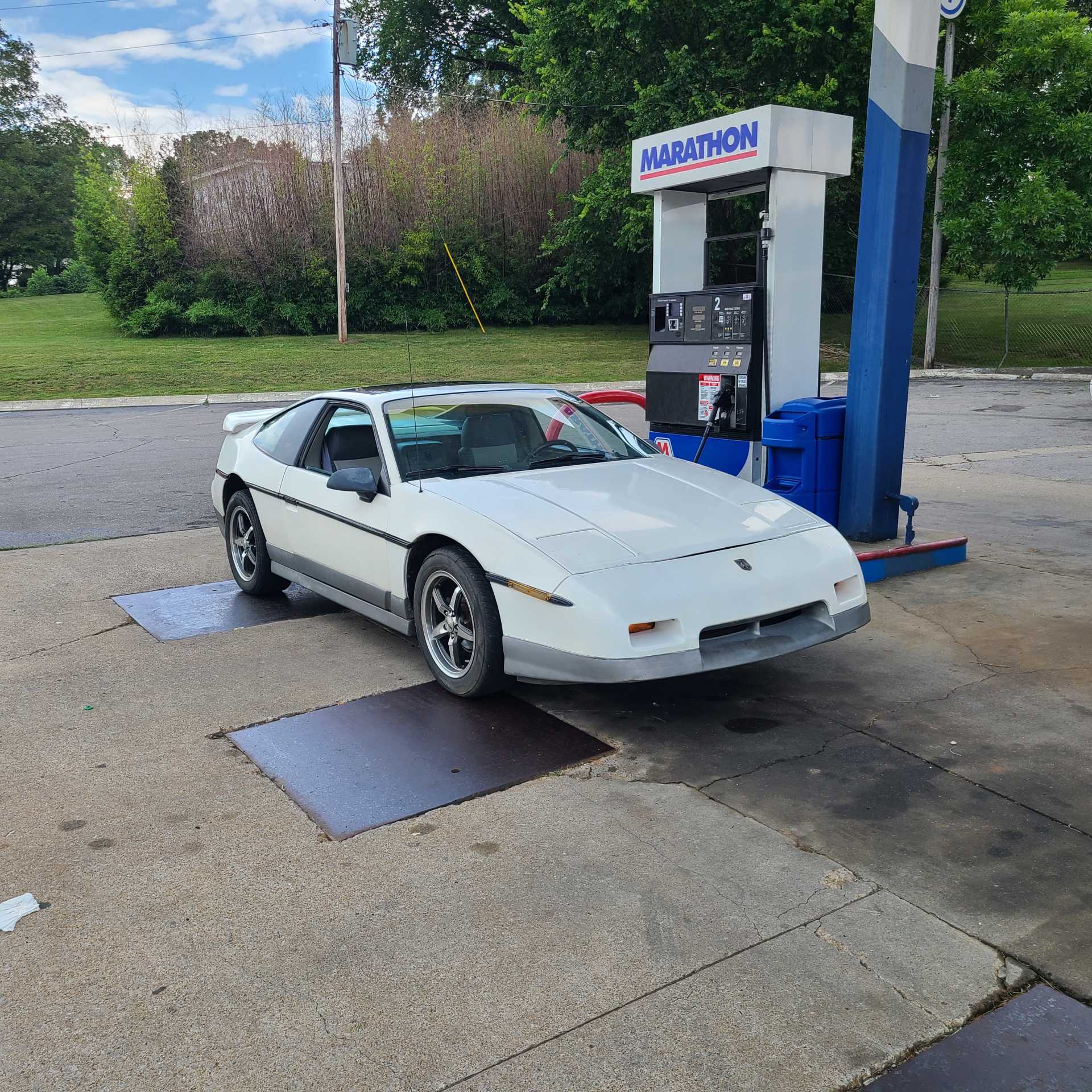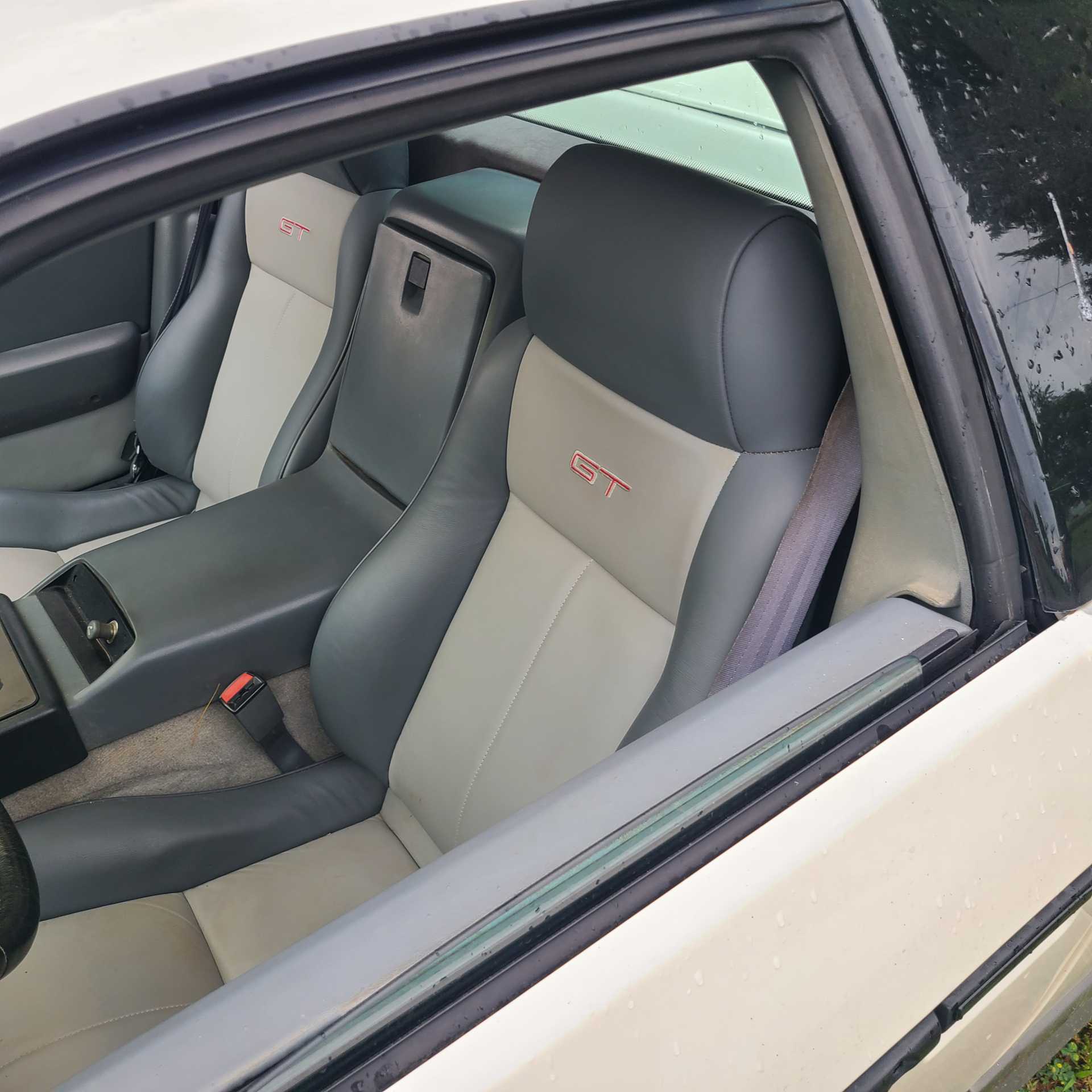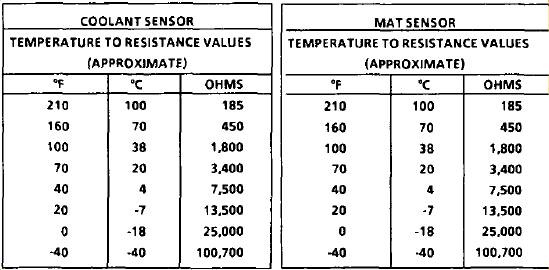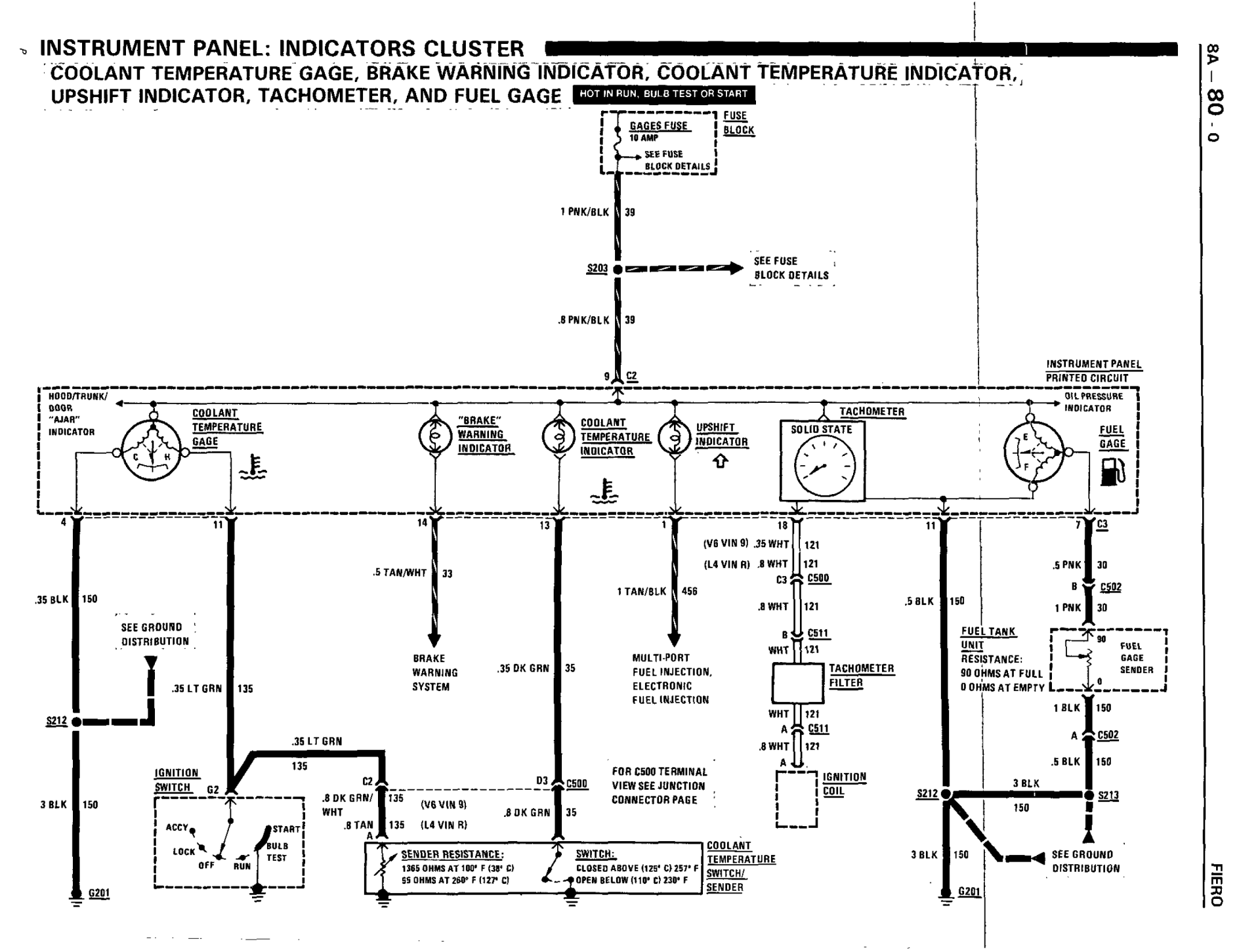
 
     |
| (New to Fieros) High Idle, Bad MPG, and Stalling in 86 GT (Page 1/2) |

|
Jeffdylanproctor
|
JUN 26, 09:59 PM
|
|
So a week ago I bought a a very clean 1986 Fiero GT (5 speed). The car hadn't been driven hardly at all in several years, but nonetheless starts up very quickly and seems to run very smoothly...excpet the idle is very high at around 2000 rpms. And it doesnt matter how long the car is running it never stops idling this high.
I put a new Idle Air Control Valve, or IAC, in it, but that didn't really help.
One day I drove for about a solid hour it developed a new problem: while driving it will start to cut out like its not getting fuel, and if you let off the throttle it will die. However, if you wait about 10 seconds you can start the car back up and it acts like it is getting fuel again without any problem. Once this began (which was after about an hour of constant driving) it repeated this behavior once every 10 minuntes or so until I got it home. It would act like it had no fuel, but after waiting ten seconds with the car off it would start back up fine. The next day I drove it around locally and it didn't cut out again, it appears to have developed it after running for a while.
I've driven the car about 350 miles this last week, and MPG seemed to vary around 18-25.
The high idle and bad mpg are its main problems, and I'm sure the incident with the fuel cutting out is related.
It also may have some other problems, but I am hesitant to take the factory gauges seriously.
These problems are:
1) The temp gauge reads about 140-160, except for one time I was in traffic and it rose to about 210 and the fan never came on. It went back down on the open road.
2) Oil pressure gauge reads low, but not quite in the red.
3) I'm not sure the brakes are getting vacuum (nothing vacuum powered seems to be getting vacuum).
This car is absolutly cool and I'm looking forward to it.


  [This message has been edited by Jeffdylanproctor (edited 06-26-2023).]
|
|

|
armos
|
JUN 26, 11:48 PM
|
|
Do you get any check engine light? It should turn on when you turn the key on, then turn off when you start the engine. If it never lights up with the key then somebody took the bulb out.
Do you have a thermostat? Sounds like it's overcooling, unless your gauge is wrong.
When it heats up, if you want to force the radiator fan on, flip on the A/C.
The factory fan switch doesn't turn the fan on until 235F - if it works at all.
Rodney Dickman sells switches that will turn the fan on at alternate temperatures.
http://rodneydickman.com/pr...o.php?products_id=95
It would be a good idea to check fuel pressure.
About 40psi with key on, engine off. With engine running it will be slightly less than that, and should increase with the throttle opening. Fuel pressure is regulated to move in relation to the manifold air pressure (which is the pressure that the fuel injectors are spraying against).
Keep the engine running and watch what's happening to fuel pressure when it starts misbehaving.
When you turn the key off, the rail should hold fuel pressure. It will bleed a few PSI in about 10 minutes or so, but it should not drop rapidly. If it loses a lot of pressure in seconds then something is leaking (often an injector, sometimes the cold start injector or the fuel pressure regulator).
You might run into fuel system problems on a car that's been sitting too much.
The ignition control module is a common issue, sometimes a bad one will act up when it gets hot. Some V6 Fieros seem to have a lot of trouble with ICMs, others don't. Mine has never been a problem but they get talked about a lot.
Check your electrical connectors for anything broken that might be losing contact. Unless somebody has already replaced them, they're probably all broken. If you get a Weatherpack removal tool, you can pop the pins out of the plastic housing and just replace the plastic, without needing to splice the wiring.
High idle
------------
could be a vacuum leak. It could also be caused by a bad coolant temperature sensor. If the ECM thinks it's cold then it can intentionally idle at 2000rpm.
If you remove the inlet hose so you can see the intake side of the throttle body, you can see the small air inlet in the throttle body that leads to the IAC. Start the car and then try covering that IAC inlet with your finger. When you cover that, you should feel strong suction as you block the air to the IAC and the engine should stall immediately. If the engine can still breathe at all when you plug that hole, then there's a significant vacuum leak.
This does not rule out all vacuum leaks, it's just one way to detect a major one. Even if the engine stalls as expected, you might still have a vacuum leak but not as huge of one.
The EGR tube that connects to the underside of the intake manifold is a common place for a vacuum leak.
The coolant temperature sensor (CTS) can be tested with a multimeter. To do that you unplug the electrical connector and measure the resistance across it's terminals.
The sensor that talks to the ECM is separate from the gauge sender. The one that affects the ECM is on the passenger side of the engine.


The Intake Air Temperature sensor (IAT - or MAT as called in that chart) is in the air cleaner housing (not the manifold). This won't cause a high idle but might as well check it at the same time. The IAT and CTS follow the same resistance scale so if the car has assumed ambient temperature they should read close to the same. If your IAT is bad you might be able to save it with a soak in CLR (worked for mine anyway).[This message has been edited by armos (edited 06-26-2023).]
|
|

|
Jeffdylanproctor
|
JUN 27, 12:33 AM
|
|
I really appreciate the reply!
Yes, the car is throwing Check Engine code 15, which is evidently the Coolant Sensor Circuit.
So forgive me for being so ignorant, but which sensor exactly is this? Is it the one that goes to the ECM (located below the thermostat)? Not for the cold start injector or the gauge (which I believe is on the opposte end of the engine on a cylnder head)?
In replacing the sensor, should I also replace all the plug to the sensor as well?
Regarding vacuum leaks, I am going try to do the test you mentioned with the tube near the IAC on the throttle body tomorrow. I appreciate that advice.
The car did have a thermostat in it, and I replaced it with a new one that is rated at 195.
Also I discovered that the EGR tube is cracked (as is expected) but both ends are sealed, however, it doesntly look like anything has been done to the wiring of the EGR module to decieve it about the sealed tube. Do I understand correctly, that if one is going to block of the EGR on these engines that they need to have two of the EGR module wires tied into one another?
Thanks much[This message has been edited by Jeffdylanproctor (edited 06-27-2023).]
|
|

|
Patrick
|
JUN 27, 12:58 AM
|
|
| quote | Originally posted by Jeffdylanproctor:
Do I understand correctly, that if one is going to block of the EGR on these engines that they need to have two of the EGR module wires tied into one another?
|
|
Unless you know for sure that a custom PROM has been burned/installed with EGR delete, fix it properly, and replace the cracked EGR tube!
|
|

|
armos
|
JUN 27, 06:54 AM
|
|
| quote | Originally posted by Jeffdylanproctor:
Yes, the car is throwing Check Engine code 15, which is evidently the Coolant Sensor Circuit.
So forgive me for being so ignorant, but which sensor exactly is this? Is it the one that goes to the ECM (located below the thermostat)? |
|
Correct. ECM error codes regarding coolant temperature will be based on that sensor. If you're getting an error code for it, then it's reading something very wild. The ECM in these cars doesn't detect sensor faults unless they're reading something severe.
Either the sensor is faulty or you could have an open circuit caused by a break in the wiring/connector that's plugged into it. Check the resistance on the sensor to confirm if it's the sensor.
| quote | | Not for the cold start injector or the gauge (which I believe is on the opposte end of the engine on a cylnder head)? |
|
The ECM doesn't see either of those so you'll never get a code for those.
| quote |
In replacing the sensor, should I also replace all the plug to the sensor as well? |
|
No need to do that unless it's broken. If it is broken then replace it. Broken connectors can bite you later and make the car unreliable. This could even be your whole issue - if this connector wasn't plugged in, it would cause your error code.
Some connectors are worse about coming loose than others.
The connectors on the side of the ICM (under the distributor) were very problematic for me - they'd pull loose all the time until I replaced them.
Also the short wire harness from the ignition coil to the ICM is failure prone because it gets a lot of heat.
| quote | | The car did have a thermostat in it, and I replaced it with a new one that is rated at 195. |
|
If your gauge keeps reading in the 140-160 range, it's possible the gauge is reading incorrectly low. They're not real accurate though.
The sender for the gauge is on the rear head (near the trunk) towards the driver side. It uses a different resistance scale from the other sensors though.

According to that, they give a resistance of 1365ohms at 100F and 65ohms at 260F. I don't know if a more complete scale is posted somewhere.
If you have resistors around, you could unplug the connector and put a known resistance across it to see if the gauge points where it should.
Sometimes the needle gets twisted on the shaft. This happens because every time the car is started, the needle slams to the right. This is a wiring flaw from factory - the factory wiring sends the "bulb test" to the analog gauge, which slams the needle.
There are different ways of stopping that behavior. Some like to redirect the wiring so that the bulb test actually tests the overheat bulb and not the needle. Another solution is to just disconnect it entirely.
https://www.fiero.nl/forum/Forum2/HTML/146785.html
There might be a more detailed explanation somewhere, that's just what came up in a quick search.
If you ever need to search the forum for topics like that, you can do it with your favorite search engine by appending "site:fiero.nl" to your search.
For example:
| quote | | bulb test temperature gauge site:fiero.nl |
|
That works with google and duckduckgo anyway. Haven't tried others.
I've had trouble with the forum's built in search, but it might turn up threads that external search sites don't.[This message has been edited by armos (edited 06-27-2023).]
|
|

|
82-T/A [At Work]
|
JUN 27, 08:23 AM
|
|
| quote | Originally posted by Jeffdylanproctor:
the idle is very high at around 2000 rpms. And it doesnt matter how long the car is running it never stops idling this high.
|
|
85-88 V6 Braided EGR Tube - $119
https://www.fierostore.com/.../Detail.aspx?s=67019

Also... very pretty GT!
|
|

|
Jeffdylanproctor
|
JUN 27, 09:30 AM
|
|
Thanks for the many replies, all of which are very informative. Very grateful for the link to the new EGR tube and all the description the electrics, this is a very helpful forum! I have got some equipment to test resistance, and will look into that as well. I generally take factory electronics from 1986 with a grain of salt.
So I worked on the car till 1 am last night (Central Time, as I live in Tennessee) and have some developments.
1) There is a new plug spliced in to the ECM coolant sensor (I went ahead and ordered a new sensor and plug).
2) The small vacuum lines are extremely brittle where they fit together, so much so that I cant tell if I disconnected them or if they were already off.
3) The EGR was sealed off with a very thin peice of metal beneath the tube plate, so I doubt anything that crude would be accompained by ECM reprogramming.
4) I put it all back together and now the throttle is always wide open when the car is on. I shut it off quickly as it rips past 3,000 rpm. So I wasn't able to do the throttle body vacuum test like I wanted. I must have done something wrong when putting it all pack together, I'm sure its simple, and will look into it when I get back home.[This message has been edited by Jeffdylanproctor (edited 06-27-2023).]
|
|

|
Vintage-Nut
|
JUN 27, 10:20 AM
|
|
High Idle Condition
As others said, broken vacuum lines can cause a high idle condition. If the exhaust manifold is 'glowing' - this can be a major vacuum leak.
Another Source of Vacuum Leaks is under the Plenum and above the Intake Manifold
Check the SIX (edit) plastic vacuum lines for leaks as they can get brittle over time; the vacuum line to the EGR valve gets a lot of heat from the exhaust manifold.
EDIT: If you have a handheld vacuum pump with a gauge (a tool to bleeding brake fluid) you can create vacuum and test each line individually.[This message has been edited by Vintage-Nut (edited 06-27-2023).]
|
|

|
ArthurPeale
|
JUN 27, 10:27 AM
|
|
| quote | Originally posted by Jeffdylanproctor:
4) I put it all back together and now the throttle is always wide open when the car is on. I shut it off quickly as it rips past 3,000 rpm. So I wasn't able to do the throttle body vacuum test like I wanted. I must have done something wrong when putting it all pack together, I'm sure its simple, and will look into it when I get back home.
|
|
Double check the vacuum lines - there's a big line that goes into the plenum that will do as you're describing if it's disconnected, and the EGR tube will also if it's not done correctly.
|
|

|
Jeffdylanproctor
|
JUN 27, 12:15 PM
|
|
| quote | Originally posted by ArthurPeale:
Double check the vacuum lines - there's a big line that goes into the plenum that will do as you're describing if it's disconnected, and the EGR tube will also if it's not done correctly. |
|
Is it the big line that goes from the valve cover to bottom of the plenum? Also, is it the EGR tube that can cause this problem or the EGR control module over by the thermostat?[This message has been edited by Jeffdylanproctor (edited 06-27-2023).]
|
|
    
  |
|















